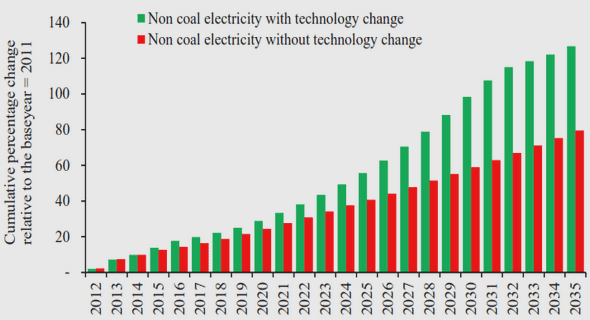(Downloads - 0)
For more info about our services contact : help@bestpfe.com
Table of contents
LITERATURE REVIEW
CENTRAL FATIGUE AND CEREBRAL PERTURBATIONS
WITH EXERCISE
CENTRAL FATIGUE
TECHNIQUES OTHER THAN NEURAL STIMULATION TO INVESTIGATE
MECHANISMS OF CENTRAL FATIGUE
Electromyography
Near-infrared spectroscopy
Doppler ultrasound
Magnetic resonance imaging
Electroencephalography
NEUROMUSCULAR STIMULATION
ELECTRICAL STIMULATION
MAGNETIC STIMULATION
Coils
Circular coils
Figure-of-eight coils
Double-cone coils
Stimulator types
Monophasic
Biphasic
MAGNETIC STIMULATION FOR FATIGUE
PERIPHERAL MAGNETIC STIMULATION
CERVICOMEDULLARY JUNCTION MAGNETIC STIMULATION
TRANSCRANIAL MAGNETIC STIMULATION
Methodological issues
Upper limbs
Cortical voluntary activation
Motor-evoked potentials
Cortical silent period
Paired pulses
Lower limbs
Cortical voluntary activation
Motor-evoked potentials
Cortical silent period
Paired pulses
TRANSCRANIAL MAGNETIC STIMULATION HIGHLIGHTS
SLEEP DEPRIVATION
SLEEP DEPRIVATION HIGHLIGHTS
ULTRA-ENDURANCE EXERCISE
ULTRA-ENDURANCE EXERCISE HIGHLIGHTS
REVUE DE LA LITTERATURE
FATIGUE CENTRALE
STIMULATION MAGNETIQUE
STIMULATION MAGNETIQUE POUR LA FATIGUE
STIMULATION MAGNETIQUE TRANSCRANIENNE
Membres supérieurs
Membres inférieurs
PRIVATION DE SOMMEIL
EXERCICE D’ULTRA-ENDURANCE
INTRODUCTION TO STUDIES 1 AND 2
STUDY 1
ABSTRACT
RÉSUMÉ
INTRODUCTION
METHODS
RESULTS
DISCUSSION
STUDY 2
ABSTRACT
RÉSUMÉ
INTRODUCTION
METHODS
Subjects
Experimental design
Force and electromyographic recordings
Femoral nerve stimulation
Transcranial magnetic stimulation
Determination of coil position
Determination of stimulus intensity
Data analysis
Statistics
RESULTS
Selected stimulus intensity
Boltzmann sigmoidal curves
DISCUSSION
Comparison of methods
Resting motor threshold
Active motor threshold
Stimulus-response curves
Comparison of muscles
Conclusion
INTRODUCTION TO STUDIES 3 AND 4
STUDY 3
ABSTRACT
RÉSUMÉ
INTRODUCTION
METHODS
Subjects
Experimental design
Preliminary visit
Experimental conditions
Sleep, activity and condition control
Force and Electromyography
Femoral nerve stimulation
Transcranial magnetic stimulation
Neuromuscular testing
Cognitive task
Exercise protocol
Data analysis
Activity
Peripheral nerve stimulation
Transcranial magnetic stimulation
Cognitive task
Statistics
Exercise and neuromuscular responses
Cognitive task
RESULTS
Sleep patterns and sleepiness
Performance, RPE and HR during exercise
Neuromuscular responses
Maximal voluntary and evoked forces
M-waves
TMS stimulus intensity
Voluntary activation
Motor-evoked potentials (at optimal stimulus intensity)
Motor-evoked potentials (at sub-optimal stimulus intensity)
Cortical silent period
Cognitive task
Reaction time
Decision errors and omissions
DISCUSSION
Cycling performance
RPE and HR
Neuromuscular function
Cognitive performance, sleep deprivation and exercise
Limitations
Conclusion
STUDY 4
ABSTRACT
RÉSUMÉ
INTRODUCTION
METHODS
Subjects
Experimental design
PRELIMINARY SESSION
Neuromuscular testing protocol
Force and electromyographic recordings
Femoral nerve electrical stimulation
Transcranial magnetic stimulation
Data analysis
EMG and femoral nerve electrical stimulation
Transcranial magnetic stimulation
Statistics
RESULTS
Performance
Maximal voluntary torque and evoked responses
M-waves and RMS
Voluntary activation
Motor-evoked potentials
Cortical silent period
DISCUSSION
Maximal torque and PNS measures: comparison with the literature
Centrally- and peripherally-assessed voluntary activation
Motor-evoked potentials and cortical silent periods
Limitations
Conclusion
GENERAL DISCUSSION AND PERSPECTIVES
DISCUSSION
PERSPECTIVES
DISCUSSION GENERALE ET PERSPECTIVES
DISCUSSION
PERSPECTIVES
REFERENCES
APPENDIX – ASSOCIATED PUBLICATIONS



